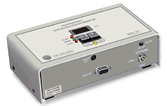
WHAT IS RADON?
Radon is a tasteless, odorless, colorless, naturally
occurring radioactive gas. It comes from the breakdown
of uranium in rocks and soil. Western Pennsylvania is
one of the areas in the United States where high radon
levels are common. Notice on the graphic to the left
the many ways radon can enter into a house.
DID YOU KNOW ...
After smoking, radon is the second leading cause of lung cancer and is estimated to cause approximately 15,000 deaths in the United States annually. An estimated 40 percent of Pennsylvania homes have radon levels greater than the EPA guideline of 4.0 pCi/L.
A study reported National Safety Council estimated that the number could range from 7,000 to 30,000.
HOW DO YOU KNOW IF YOUR HOME HAS HIGH RADON LEVELS?
You and your family are most likely to get your greatest exposure to radon at home. The only way to know the radon level in your home is to test. Testing is easy and inexpensive. You may perform the test yourself using a Pennsylvania certified testing device purchased at a home center, hardware store or from a Pennsylvania certified laboratory which you will need to send to a lab for results.

More accurate testing is available when you hire a Pennsylvania certified technician to perform the test using state-of-the art monitors such as the Sun Nuclear monitors used by Richard D. Malin & Associates.
Short Term Test - These tests are placed for 2 to 7 days and provide a quick screening result. Closed house conditions must be maintained during these tests.
Long Term Test (Alpha Track Test) - These tests are placed from 3 to 12 months and provide a long term average of the home's radon level. Closed house conditions are not required for these tests. The cost of a test is about $20 to $30 for a do-it-yourself test, and about $140 for a PA DEP certified tester to test your home.
WHAT DO YOUR TEST RESULTS MEAN?
The U.S. Environmental Protection Agency (EPA) recommends that if your initial radon test result shows a level of 4.0 pCi/L or higher, you should confirm the result with a follow-up test. For homes with radon levels of 4.0 pCi/L or higher the EPA recommends that you have a radon mitigation system installed to the lower the radon levels.When selling a home, the seller must disclose any known radon test results to the buyer.
HOW CAN YOU REDUCE YOUR RADON LEVELS?
Radon levels can be reduced by installing a radon mitigation system. The most common type of system uses an arrangement of plastic pipes and a fan to vent the radon gas to the outside air. The typical cost of a radon mitigation system is from $700 to $1,200.
IMPORTANT NOTICE:
Pennsylvania law requires anyone (except the owner / occupant of the building) performing radon testing, mitigation or laboratory analysis be certified with the PA Department of Environmental Protection (DEP).
Richard D. Malin & Associates, Inc. is a Pennsylvania Department of Environmental Protection certified testing firm. (PA DEP #2001) and is certified by the National Radon Safety Board as a Radon Measurement Specialist (7SS0056).
To verify certification call 1-800-23RADON or go on line at http://www.dep.state.pa.us/brp/Radon_Division/Rn_Services_Directory/Directory_Mainpage.htm
Radon-Related Links
|